So is your beloved “evergreen” pine tree turning yellow all of a sudden? And are you wondering if your plant is sick?
The answer…. It depends.
Cause pine trees to go through a shedding process, especially in autumn. They retain most of their new foliage and the older needles from previous seasons turn yellow then brown and eventually fall off. In that case, your pine tree turning yellow is natural. There’s nothing to worry about and it’s a short-staying process, in a few days you will have fresh, revived greenery in front of you.
But that’s not always the case, right? You see, It should be the inner side of the branches that turn yellow, not the tip. And if it happens it’s definitely suggesting that it might be experiencing water and nutrient deficiency and a possible pest attack and fungal infections.
You need to observe and identify the cause so that you don’t leave your plant unattended thinking it’s natural.
Early predictions and actions are always the keys to saving your plant’s life.
Causes of Pine Trees Turning Yellow
Lack of water or overwatering
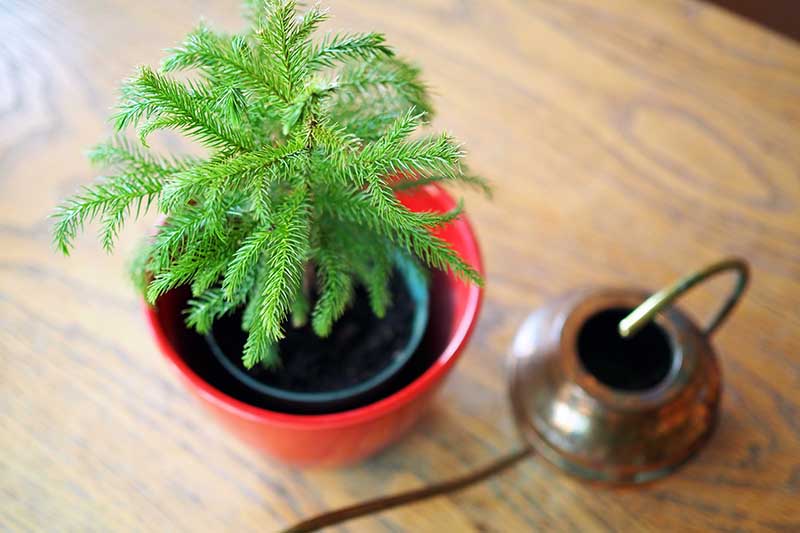
Even though pine trees are a popular drought-resistant plant, during dry seasons they appreciate a good amount of water. But it’s fairly easy to overwater them than underwater. Overwatering your pine tree can lead to soil conditions that will restrict the exchange of oxygen, meaning using too much water will restrict the roots from receiving oxygen and eventually suffocate them. The symptoms of overwatering include yellowing needles and droopy branches.
But underwatering also imitates the same symptoms of overwatering.
Pierce your finger in the soil, a few inches deep, if it appears muddy it’s an indication that your plant is overwatered. Examine the process in other areas of the soil to get a conclusion.
Pick a needle off of your pine tree, and try to bend it, if it snaps easily it’s a sign that your tree lacks moisture in its needles and you are underwatering it.
Nutrient deficiency
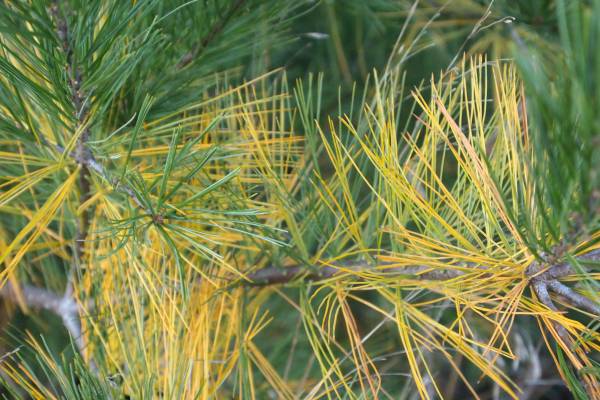
One nutrient deficiency might not show symptoms in your pine tree but several nutrient deficiencies give off visible symptoms that conform to underlying issues that your tree might be facing and one of the prominent symptoms in pine tree needles turning yellow.
In nitrogen deficiency, needles of the pine tree turn yellowish-green all across the entire length of the needle but uniformly. In extreme cases, the whole needle turns yellow, grows stunned, and sheds prematurely.
In phosphorus deficiency, the tip of the needle at the end of the branches turns yellow.
In magnesium deficiency the tip of primary and secondary pine needles experience chlorosis( a condition in which leaves lose their green color due to nutrient shortage). In severe cases, chlorosis changes its color from yellow to deep golden hue.
Pest infestations
Common culprits of nonseasonal yellow needles are those pests that consume the sap of the needles ruthlessly. Let’s see who are those uninvited guests getting free meals out of your precious tree:
Eriophyid mite: a small wormlike whitish arachnid, casually crawls in the needles and feeds on them. They leave symptoms like misshaping and yellow leaves.
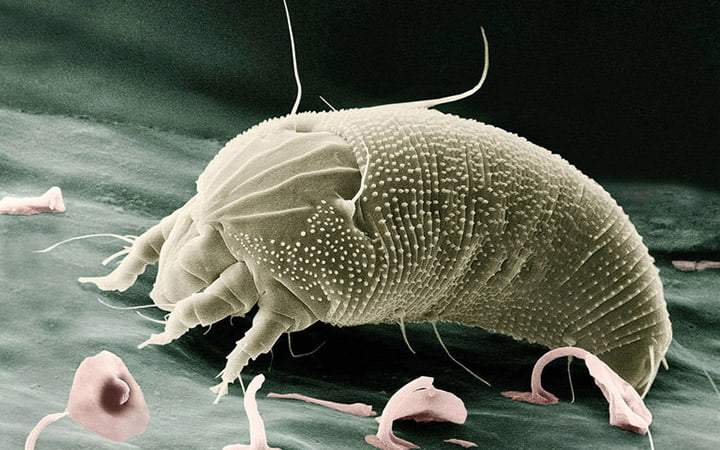
Pinewood nematode or pine wilt nematode is a wilt disease that is triggered by a species of nematode, a wormlike creature. They are responsible to turn pine needles off-green or yellow. The dead needles are usually attached to the tree for a longer period. The species is so tiny to identify with the naked eye, but they are usually carried and spread by sawyer beetles, so you need to look out for those carriers around your tree.
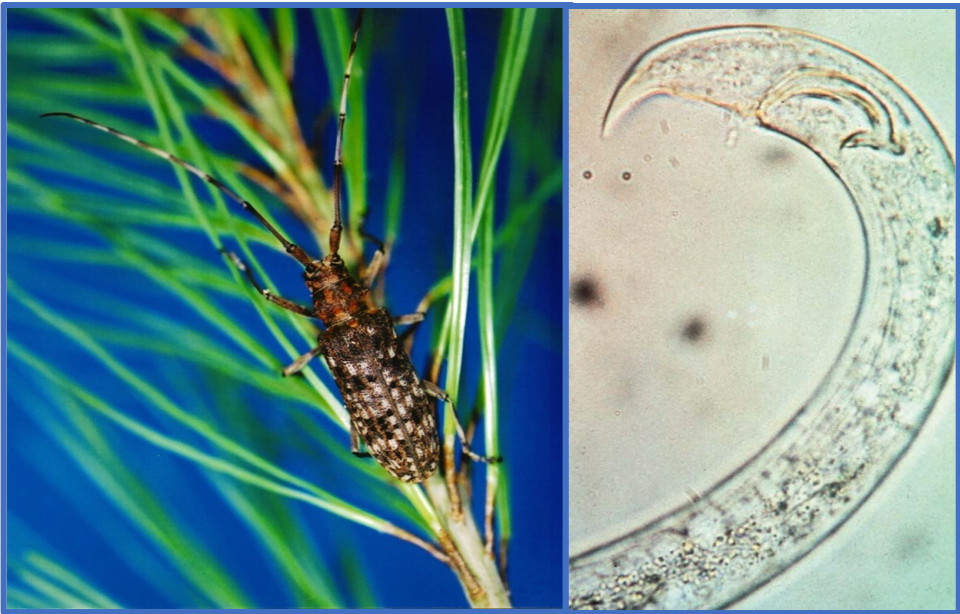
The black pine leaf scale is yellow-brown to black in color, and hatch eggs during summer and spring. They simply feed on the needles and cause yellow leaves and gradual death. Other symptoms of the affected tree are thinning crowns and shortened needles.
And definitely spider mites( they are always at the scene of the crime). They are a prevalent type of pests that suck the chlorophyll of the needles. Examine them for yellow stippling or spotting in the needles and of course tiny webbing on the stems.
Fungal infections
Several diseases that occur in pine trees are fungal diseases and many of their early symptoms show as your pine tree turns yellow.
Pitch canker: Pitch canker is caused by a fungus called Fusarium Circinatum. They show symptoms such as gradual yellow to brown to dead leaves and wilt in the tip of the branch. They are easily spread all over the plant by beetles and pests.
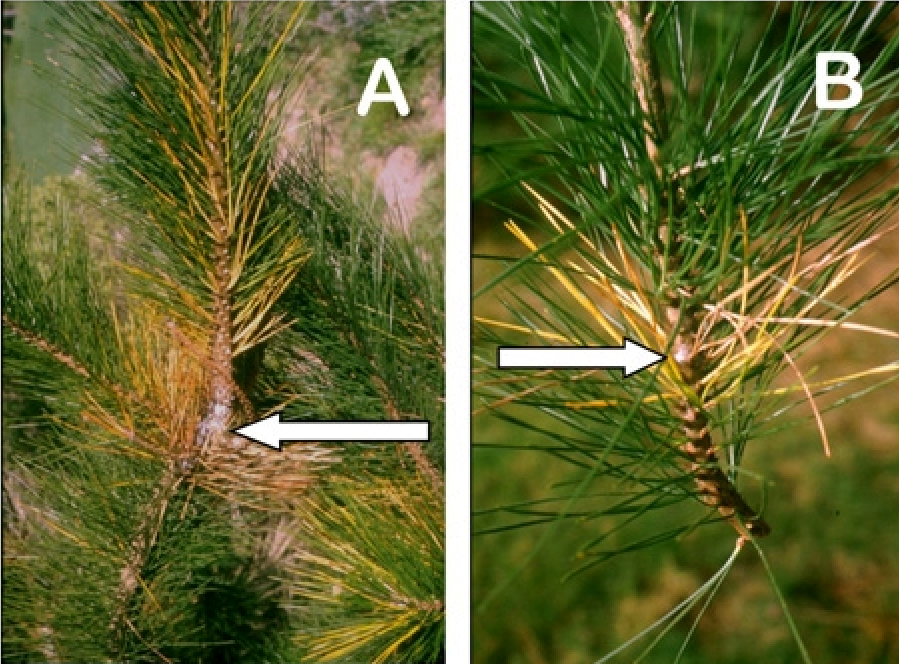
Needle rust: A fungus called Coleosporium Asterum caused needle rust. needles that are infected will develop yellow spots on the upper surface. Several infections end up from yellow leaves to brown leaves falling off the tree.
Diplodia tip Blight: Caused by a fungus called Diplodia pinea. Effects on those trees in your yard that are stressed and weakened from excessive drought, sunlight, and soil disbalance. Along with your pine tree needles turning yellow in color, it can also appear brown or grey. Other symptoms include stunted growth and small leaves.
Environmental stressors
Extreme environmental changes may lead to your pine tree turning yellow. For example, sun scald, a condition that happens during winter because of winter winds, dry air, and low moisture in the soil. It leads to the most exposed side of the tree turning yellow, which occurs mostly on the tips of the branches.
Another condition is called sudden freeze damage. When the weather turns rapidly from warm to cold it didn’t get the time to initiate the metabolic process and prepare for cold temperature, resulting in yellowing tips all around the leaves. This means, if the temperature varies from 70 to 15 °F in the span of two days, it won’t be able to handle it.
Soil pH imbalance
When the soil is over-stuffed with compost, most specifically composted manure, the PH level increases due to an accumulation of base cations. If underwatered your pine tree, the plant fails to wash the nutrients that gradually collect in the soil. Soil pH plays a crucial part in a tree’s development and overall health. Pine trees thrive in acidic soil. Ill pH-balanced soil shows through the symptoms of yellow leaves.
Different nature of yellowing and the reason behind them:
| NO. | Yellowing pattern | Reason |
| 1. | Old needles are turning yellow | Yellowing of old needles is a natural process. Even though sometimes triggered by heat waves, they don’t usually require any special treatment other than having a proper watering routine. It can happen any time of the year but mostly occurs in summer and fall. |
| 2. | The base of the new needles is yellow but the tips are green. | Commonly happens due to overwatering or lack of nutrients. Sometimes both. Mineral deficiency also can be the reason for this exact pattern of yellowing, but this rarely happens. |
| 3. | Yellow branches with green needles | The reason behind it is lying in the root. But if the yellowing occurred in a single branch, most probably the reason behind it is outside forceful damage. Old soil mostly affects the roots and that affects the branches. |
| 4. | Yellow needles with spots and bandings | Physical damages like bending or breaking needles are mainly responsible for this. Other than that, some pathogens like blight and needle cast cause damage as well. |
| 5. | Yellowness accompanied by brown or black needle tip. | Poor soil conditions cause this. Most of the time this happens due to mineral imbalance in the soil and mineral imbalance is mainly caused by over-fertilization. |
| 6. | Twisted yellow needles | It’s commonly caused by root pathogens, mainly by pythium. Pythium is driven by excessive moisture and mild temperature. |
| 7. | Yellowing on the upper side of the branches | This happens due to excessive sunlight only on one part of the tree. |
| 8. | General Yellowing | Cool temperature, not enough fertilizer, poor soil, too much water, not enough water, poor water quality, spider mites, aphids, etc. are all responsible for yellowing pine needles. |
How to Prevent Pine Trees from Turning Yellow
Proper watering techniques
Pine trees won’t survive in heavily moist soil, so overwatering is a big no. But trees in their young phase need good and deep watering during drought seasons.
Baby indoor pine trees crave water for their growth. So, make sure the soil is never left dry, it should be moist to touch.
Tips:
- Newly planted trees require more water than established ones.
- Mulching is essential to keep the moisture in the soil. Evenly spread wood-based mulch beneath the tree is ideal, avoiding inorganic options like rubber mulch which don’t decompose (and don’t add valuable nutrients).
- During drought season water your tree in the morning so it will have enough time to take moisture from the soil before the sun arrives and place a course of heat on the weather.
Soil testing and fertilization
Soil testing at home:
- Take soil from at least two to three places from the pot for more accurate results.
- Remove stones, and sticks from the soil, and break up soil chunks if any.
- Place the soil in a glass bowl and add distilled water till it’s muddy in texture.
- If you are using one cup of water, use ½ cup of vinegar. If your soil starts to bubble up, meaning it’s alkaline.
- If nothing happens repeat the process, but this time with baking soda, If it starts bubbling, meaning your soil is more acidic.
As pine trees do best in acidic soil, you can use sulfur before planting your plant. You can use acidic fertilisers as well.
Potted pine trees are effortless to fertilise. Depending on the source the frequency of fertilizer can vary from once a month to once every four months. A balanced water-soluble regular houseplant fertilizer would work. Once the plant is grown, the frequency can be reduced even more.
Pesticide and fungicide applications
Regular observation of the tree for pesticide and fungal infections can prevent your tree from getting infected in the first place. But if it’s already infected please read the “How to treat the yellowing pine tree” below to learn about the treatments for each pests and fungus that might be attacking your plant.
Providing adequate shade and shelter
Pine trees can tolerate dimmer light conditions for several months, but they love good exposure to sunlight. That being said, you can keep them inside during winter and move them in sunlight during summer. Overusing fertilisers and less sun exposure show signs through your pine tree turning yellow and slow growth. To reduce this you need to use less fertilizer and provide enough sunlight.
Mulching
Adding a layer of mulch at the base of your container is ideal, especially during drought seasons to maintain the moisture in the soil. Wood-based mulches are more durable than volcano mulch. If you have enough space in the container, during the needle-falling season you can use them as natural mulching.
How to Treat Yellowing Pine Trees
a) Follow the right water techniques by using a soil moisture meter and give it some time to recover to its healthy phase. Less harmful causes that your pine tree needles turning yellow sticks like dry soil and weather can be treated with the proper watering technique mentioned above. But it’s a bit of a time-consuming process, your tree turned yellow gradually and it will go back to green gradually as well so you have to keep your patience.
b) For nutrient deficiency, you can take the soil you are using for your plant to a professional or do it at home. It is important to fulfill its nutritional needs so that you can fertilize them based on the guidance from the soil test.
c) Pest treatment
Eriophyid mite: The best thing about eriophyids is that they only caused aesthetic damage to the tree. So, pruning out heavily infected needles is enough to cure them.
Pinewood nematode: Unfortunately, there’s no way to save a tree that is infected by pinewood nematode. The demise of the tree occurs slowly, from a few months to two years, heavily relying on the size of the pine tree. The best advice is to isolate the infected tree from the others so it can not be spread.
The black pine leaf scale: Trees that are under stress and living in dust can invite these pests, so try to avoid these kinds of conditions for your tree. Otherwise, use horticultural oil, or insecticidal soap to get rid of them.
Spider mites: Small pine tree owners can remove the mites just by spraying water over them. If the condition gets out of hand you can use insecticidal soap. A layer of mulch will help as well as a pine tree that is vulnerable to mites during drought seasons.
d) Fungal infection treatment
Fusarium Circinatum: There is no effective method to treat your tree from Fusarium Circinatum, so moving to your healthy trees is a more viable option. Insecticide does not help in this case, so pruning with sanitized tools is essential.
Coleosporium Asterum: Watering and mulching help and as they caused little damage to the tree you can live with it.
Diplodia Pinea: Regular pruning during dry weather, watering during drought seasons, avoiding over-fertilization, and disinfecting pruning tools collectively will help you to cure.
Pine Tree Maintenance Tips
Regular tree inspection
Regular inspection for the issues will help you take early measurements of any kind of disease your plant might be facing. The gradual changes inspected through your regular observation will make you determine the cause of yellowing leaves much easier. Pine tree turning yellow caused by imperfect soil or fertilizers occur slowly and it would be hard to quickly identify it, but regular observation will definitely give you a heads up. On the other hand, you can remove the possibility of pests and fungal attacks even before they smell your plant’s location.
Pruning techniques
Unless there’s a damaged part that needed to be trimmed off, they don’t require pruning. But pruning can be a healthy habit to promote bushy growth. Spring or autumn is the ideal time to shape them.
To prune your pine tree, hold the top of the tree and cut it at your desired height, and then trim from the remaining tips to shape them. That’s it!
Soil maintenance
Indoor potted pine trees require loose soil with sand and large particulates that drain well. They can adjust in most neutral soil types but thrive in soils that are acidic. The needle-drop self-mulching technique can provide the acidity levels in need.
Terra cotta pots are ideal for pine trees. They are hardy, they can absolve or evaporate water as well.
Seasonal care
To avoid environmental stressors, water should be provided if the temperature peaks more than 40 degrees, at least once or twice a month. Wilt-proof spray during dry weather will provide temporary protection from moisture loss issues. Less frequent watering during winter and more water during summer, pruning during spring and autumn to promote growth, and mulching during drought seasons will help in all-year overall maintenance.
FAQs
Why do evergreen trees turn yellow?
They might turn yellow due to improper watering, pest infection, or nutrient deficiency, to name a few. But evergreen turning yellow is not always an indication of suffering, old leaves or needles turn yellow and that’s normal.
Can yellow leaves turn green again?
Unfortunately no, a leaf that already had lost its chlorophyll won’t turn green again. It’s smart to carefully remove it and tend the rest of the tree. Don’t worry if you take proper care of it, it will be filled with dazzling green leaves again.
What is the best fertilizer for pine trees?
Look for a fertilizer with a ratio of 10-8-6 NPK, cause pine tree prefers fertilizer with higher level of nitrogen and lower level of phosphorus and potassium.
Conclusion
You don’t need to worry if the yellow needles are caused because of seasonal falls. But at the same time, it is worrisome as you might ignore your yellow leaves, thinking it’s natural while it might be happening because of water issues, nutrient deficiency, or pests. We hope after reading this article you will determine the cause and take action beforehand and get the answer of why your pine tree turning yellow. save your precious evergreen so it never loses its color.

